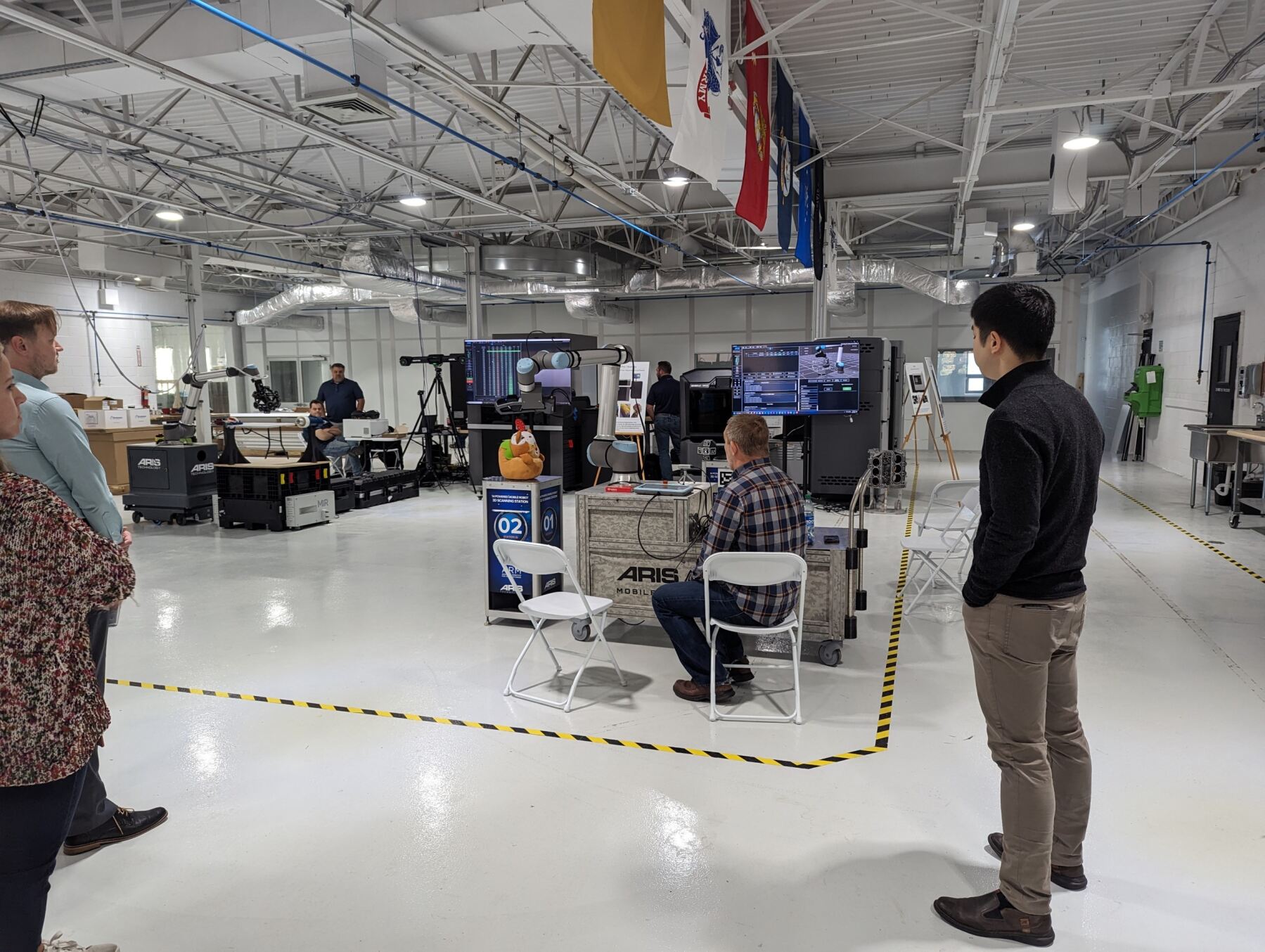The Defense Division of NJII uses several types of additive manufacturing (AM) equipment at its Advanced Manufacturing Facility in Landing, New Jersey, named Landing 360. Through the COMET (Collaborative Operationalized Manufacturing Engineering and Training) Program, each machine chosen for the facility meets a customer’s need and allows for prototyping, workforce development, manufacturing research, and low-rate production. To date, most of our AM equipment is centered around polymers, metals, and printed electronics.
Polymers
Landing 360 uses 2 different polymer processes – material extrusion and vat photopolymerization. Material extrusion is also called fused filament fabrication (FFF) and is the most well-known of the AM techniques as it’s used by many hobbyists and schools. In this method, a polymer filament is driven into a hot nozzle where it melts and is extruded out onto a build plate. Using a software program, the nozzle rasters across the build plate, depositing extruded material layer by layer until complete. Material extrusion equipment ranges from simple machines that produce toys and parts with visible extrusion lines (ie. low resolution) to complex production-quality machines that make parts to tighter tolerances and higher strengths. Landing 360 has Prusa Mk4, Stratasys F370, F450, and F900, as well as the Ultimaker 5s.
The second polymer process utilized by Landing 360 is vat polymerization, also called stereolithography (SLA). This process builds parts within a vat of resin, which is subject to a laser or ultra-violet (UV) source that causes it to harden. Following a software program, the laser rasters across the build area hardening the resin, layer by layer, until complete. Vat polymerization equipment builds parts that are good for toys, models and various prototypes. These parts can be clear or translucent but are not necessarily noted for having high strength. Landing 360 currently possesses the Form 3 and Stratasys Neo.
Metals
Landing 360 has 3 different metal processes – powder bed fusion, directed energy deposition (DED) with the metal wire process, and cold spray. Each process has its strengths with respect to the alloys used, the speed of production, part resolution and the amount of post-processing necessary to achieve the proper part geometry and strength.
Powder bed fusion uses particles of metal that are pushed onto a build plate which are then fused into place with a fine energy beam (laser or electron) that rasters across the build plate following a software design program. Once a layer is complete, the build plate shifts down, more powder is spread across the build plate, and the energy beam rasters again. The process continues until the part is complete. Powder bed fusion creates near net shaped parts which require higher strengths than polymers. These parts need post-processing in the form of heat
treatment and final machining. Landing 360 is currently working with the EOS M290 and Xact Metal XM 200G.
Directed energy deposition (DED) with the metal wire process is similar to the material extrusion process. DED feeds metal wire into a laser, melting the wire; the molten metal is then deposited layer by layer until complete. This process does not produce near net shaped parts as fine as powder bed fusion and requires post-processing heat treatment and final machining. Landing 360 has the Meltio Engine, integrated into a 5-axis CNC Haas milling machine.
Landing 360 also has a cold spray AM unit the SPEE3D Warp Speed. Cold spray is unique compared to other AM techniques which use energy sources to fix particles or set resin in a specific pattern. Instead, during the cold spray process, metallic powders are accelerated in a high-velocity gas stream. When these powders impact the build plate, they deform and bond together, building up a mass of material. Unlike conventional AM methods, the cold spray nozzle does not raster over the build plate in a precise fashion and, as a result, produces a part that is a near net shape which requires post-processing and final machining. However, an advantage of cold spray is that it can be used to repair parts by restoring material that has been worn away through use.
Whether you’re developing parts to be used as prototypes to check form and fit, performing manufacturing R&D, producing metal replacement parts or even repairing parts, Landing 360 has access to a wide range of equipment to help customers determine their best path forward. Learn more about the COMET program and about our Advanced Manufacturing Facility.
